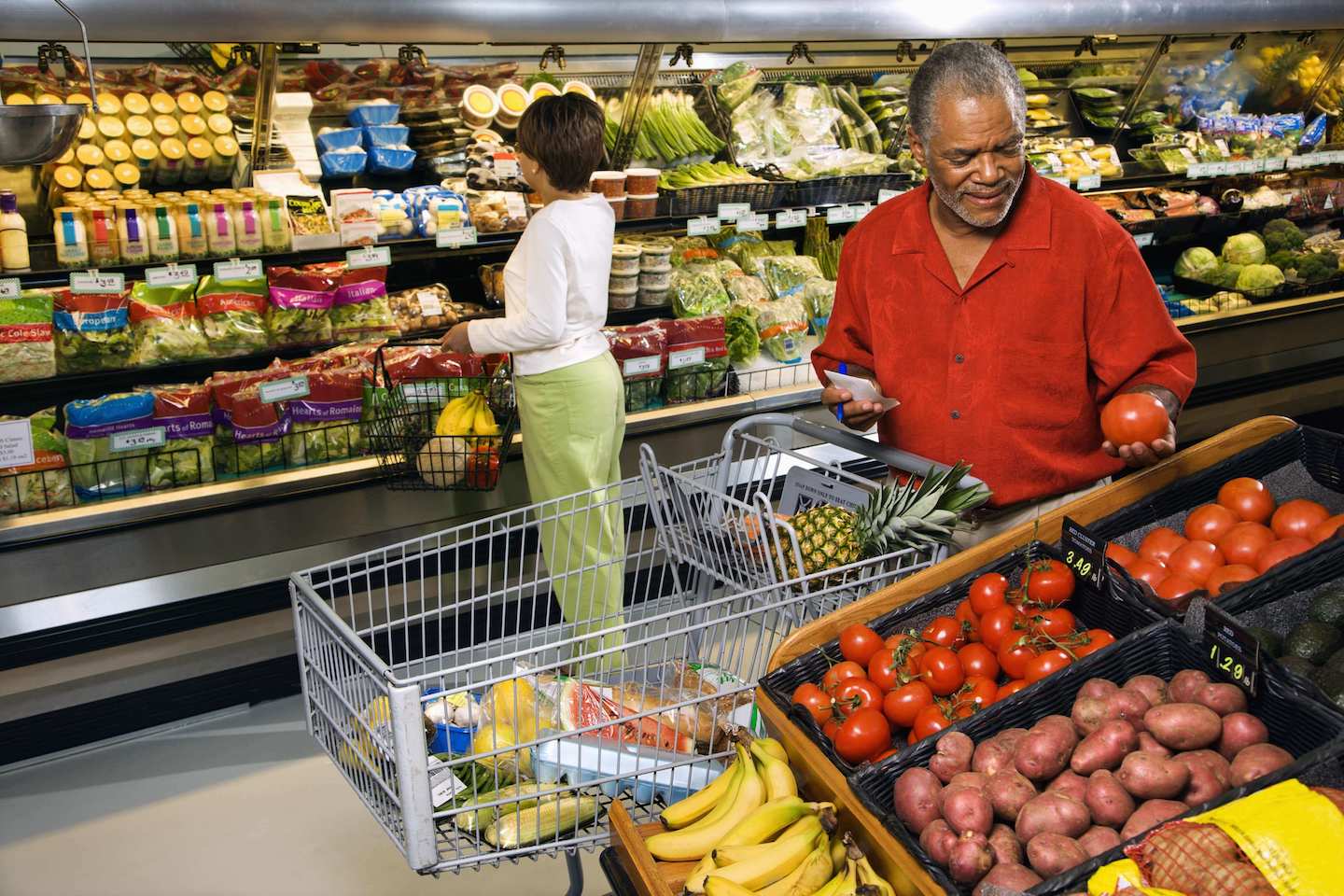Osteoporosis is the thinning of bones because the body doesn’t make enough bone, loses too much bone, or a combination of the two. With osteoporosis, bones may become so thin and fragile that minor bumps or even sneezing may result in a fracture. It is a condition that requires action early in life to prevent injury later in life. This is because peak bone mass, the most dense our bones will be in our lifetime, occurs in our early 20s.

As we age, our bones are constantly remodeling through a process of bone resorption and new bone formation. Osteoporosis occurs when bone resorption outpaces bone formation.
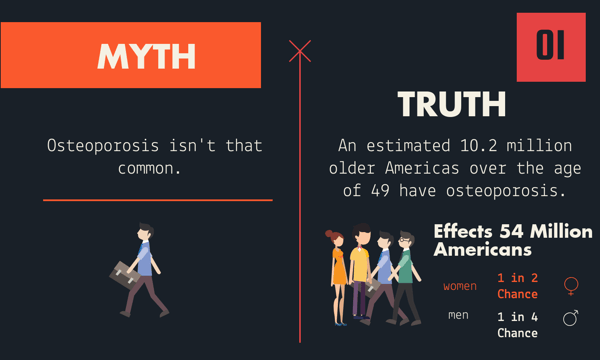
Fortunately, there are several things we can do to prevent osteoporosis. Furthermore, in the case that osteoporosis isn’t prevented, it can be treated. Many fractures can be averted through lifestyle changes and medical treatment.
Depending on your age, gender, family history, and other risk factors, your doctor may recommend diagnostic testing to assess your bone density. While some risk factors like our age or family history cannot be changed, there are many modifiable risk factors that directly impact our bone health.
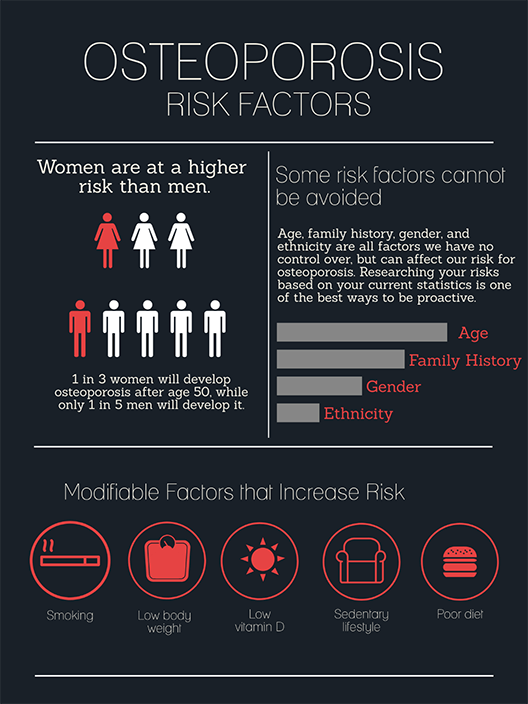
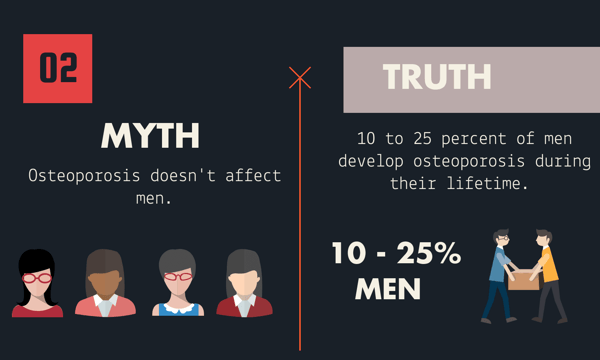
Signs & Symptoms
Osteoporosis is a largely silent condition, meaning there are not outward symptoms that can be easily observed. Unless you are regularly having your bone density tested, the first sign of osteoporosis may be a low trauma fracture. If minor bumps result in fractures, osteoporosis could be the cause.
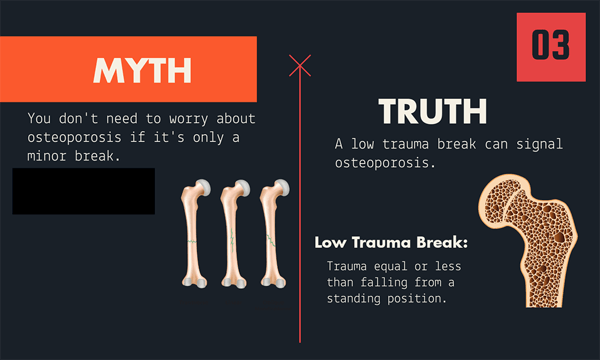
Fractures or the fear of fractures may limit a person’s ability to be mobile, therefore limiting their interactions with others. This limitation could contribute to depression (see our blog on mental health) or feelings of isolation. Making lifestyle choices to prevent and manage osteoporosis is the best way to prevent thinning bones and the complications that come with it.
Lifestyle that Prevents Osteoporosis
The longest lived populations around the world are located in areas called “Blue Zones”. While these populations vary in geographical location they have several lifestyle behaviors in common that are thought to be responsible for their health and longevity. These behaviors include eating a plant-based diet, exercising regularly, managing stress well, focusing on family, and belonging to a faith-based community. These populations have significantly lower rates of osteoporosis, as well as many other chronic diseases.
To reduce our risk of osteoporosis, we can model our lifestyle after the Blue Zones by adopting a plant-based diet and adding regular physical activity to our routine.
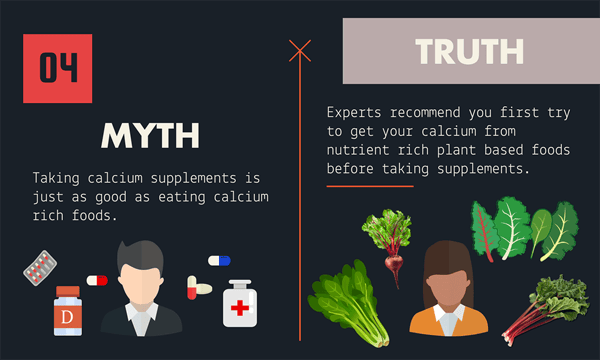
You may be wondering how you will get enough dairy on a plant-based diet; after all, milk builds strong bones right? Actually, the World Health Organization (WHO) found that countries that consume the most calcium (typically high dairy consumption) have the highest rates of hip fractures compared to developing countries that had lower intakes of calcium.
WHO states “the accumulated data indicate that the adverse effect of protein, in particular animal (but not vegetable) protein, might outweigh the positive effect of calcium intake on calcium balance.” This supports the plant-based approach the Blue Zones take to nutrition.
Interestingly, plant-based calcium is absorbed about twice as well as the calcium in dairy or supplements. Calcium-rich plant foods include green vegetables (such as broccoli, bok choy, and kale), garbanzo beans, soy beans, kidney beans, almonds, Brazil nuts, sesame seeds, oats, and fruits including oranges, apricots, and dried figs. Additionally these plant foods have vitamin K, vitamin C, fiber, folate, iron, and antioxidants to help support strong bones and good health. Just one 4-ounce serving of steamed kale has as much calcium as one cup of cow’s milk!
Another interesting point to consider is that research shows as we eat more calcium we absorb less and conversely as we eat less calcium we absorb more. This helps to maintain the appropriate calcium balance in the body. (It should be noted that at VERY low levels of calcium consumption, <400mg/day, the risk of decreased bone density increases). If you are tracking your dietary calcium intake, the Institute of Medicine recommends 1000mg/day for most adults.
Avoid high dose calcium supplements (1000 mg or more) as these do not appear to reduce the risk of hip fractures but they do increase the risk for heart attack and stroke. Stick to dietary calcium from whole foods as much as possible as they do not pose these cardiovascular risks.
Exercise is the next lifestyle behavior to incorporate for strong bones. Regular weight bearing exercises such as strength training, walking, running, or even dancing reduce the risk of developing osteoporosis.
Strong muscles help maintain strong bones, preventing osteoporosis. For more ways to add exercise, read our blogs on exercise:
https://www.medishare.com/blog/how-to-exercise-when-you-cant-take-the-heat
https://www.medishare.com/blog/get-out-and-do-something
https://www.medishare.com/blog/the-secret-to-achieving-your-health-goals
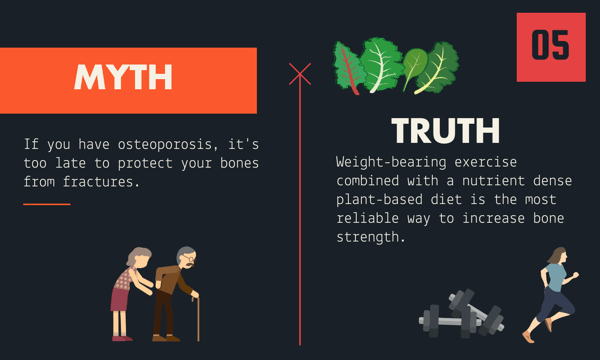
Balance exercises are important as well. While this type of exercise won’t necessarily increase bone density, it can prevent falls especially as we age. With osteoporosis, even low trauma falls can lead to fractures.
Easy activities to improve balance include simply standing with your eyes closed. As you gain balance try balancing on one foot then the other with your eyes open. Then once you have mastered that try closing your eyes and balancing on one foot, then open your eyes and try it on the other foot. Always keep a sturdy chair or other piece of furniture nearby to prevent falls while you are practicing your balance.
The stats on osteoporosis may seem scary, but with knowledge and planning, fractures and complications of osteoporosis can be prevented, managed, or treated.




